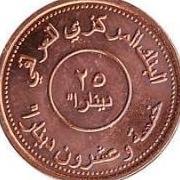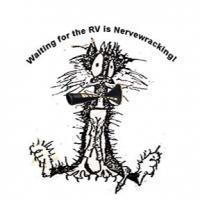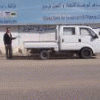
|
-
Posts
3,528 -
Joined
-
Last visited
-
Days Won
14
keylime last won the day on August 27 2024
keylime had the most liked content!
About keylime

Profile Information
-
Gender
Male
-
Location
Miami Florida
-
Interests
Screenwriting, acting, directing, football and most of all my family
Converted
-
Location
S. FL.
-
Interests
There are some things shouted where no one hears, and barely whispered where there are ears.
keylime's Achievements
-

Official work suspended for two days in Iraq
keylime replied to RJG's topic in Iraq & Dinar Related News
When has their work ever been "Official"? Smoke and Mirrors...LOL! -

Iraq Advances Towards Operational Phase of Grand Faw Port
keylime replied to bigwave's topic in Iraq & Dinar Related News
yes. whenever I see it I kick it up to $3.45 above the Kuwaiti Dinar at $3.25 -
Let us not forget my great-great Uncle, Grover Cleveland. He was on the 1000 dollar bill. United States one-thousand-dollar bill 5 languages Article Talk Read Edit View history Tools Appearance hide Text Small Standard Large Width Standard Wide Color (beta) Automatic Light Dark From Wikipedia, the free encyclopedia 1934 US$1000 bill The United States 1000 dollar bill (US$1000) is an obsolete denomination of United States currency. It was issued by the US Bureau of Engraving and Printing (BEP) beginning in 1861 and ending in 1934. Since 1969 Treasury policy is to withdraw any $1000 bills it receives, but it is still legal tender. Want to help improve Wikipedia by participating in research studies? We’re looking for Wikipedia readers like you to take part in research studies that will help improve user experiences. Click the link below to join our research participant list. You’ll be contacted periodically with opportunities to participate, and you can unsubscribe at any time. No thanksSign up See the privacy notice for this form here. To stop QuickSurveys from appearing, change your preferences. Description [edit] From 1862 to 1880 the US Treasury Department issued $1,000 Legal Tender notes, with three different designs on the obverse. The portrait of Robert Morris appeared on the first 1000 dollar bill. Mayor of New York DeWitt Clinton appeared on two other versions.[1] The obverse of the 1928 and 1934 series features a portrait of Grover Cleveland facing right while toward a United States Department of the Treasury seal.[2] The reverse of the 1928 and 1934 one-thousand-dollar bills feature lathework and a decorative border. The reverse also contains text that reads: "The United States of America / One Thousand Dollars" and the number 1,000.[3] History [edit] The United States one-thousand-dollar bill was printed from 1861 to 1945. The Bureau of Engraving and Printing (BEP) continued to issue the notes until 1969. The notes did not see much circulation among the public because they were printed to facilitate transactions between banks.[1] In 1878 and 1880 the Treasury produced the $1,000 bill as a silver certificate. Other subsequent versions were produced in 1878, 1880 and 1891. In 1913, a large-size version of the bill was issued as a Federal Reserve Note. In 1882, the note was issued as a gold certificate. In 1928 the treasury began to issue small-size bills and the $1,000 denomination featured US President Grover Cleveland. The small-size was issued in 1928 and 1934.[4] Examples of $1000 bills are valued by collectors and they regularly sell for more than their face value.[4] On July 14, 1969, the United States Department of the Treasury announced that all notes in denominations greater than US$100 would be discontinued.[1] Since 1969 banks are required to send any $1000 bill to the Department of the Treasury for destruction.[5] Collectors value the one-thousand-dollar bill with a gold seal.[6]
-

Iraqi government banks suspend loans and advances
keylime replied to RJG's topic in Iraq & Dinar Related News
I like it. I don't know why I like it. But I like it.- 12 replies
-
- 15
-

-

-

-

-
MP Mukhtar al-Moussawi: More than 50 MPs have been absent since the beginning of the session. MP Mukhtar al-Moussawi: More than 50 MPs have been absent since the beginning of the session. 2025-04-16 MP Mukhtar al-Moussawi issued a scathing warning on Tuesday (April 15, 2025) regarding the absence of more than 50 MPs from parliamentary sessions since the start of the current parliamentary session, referring to a phenomenon he described as “exceptional” and unprecedented, even in comparison to parliaments around the world. Al-Moussawi said in a press statement that “a representative is only elected to be the voice of the people under the dome of parliament, and they are responsible for attending, interacting with legislative committees, and preparing reports.” He expressed surprise at the absence of such a large number of representatives “without attending even a single session.” He added, wondering, “Do these representatives have convincing excuses? Are the salaries and benefits they receive permissible in light of this complete absence?” He warned that “the continuation of this situation sends negative messages to the public and undermines people’s confidence in the legislative institution.” Al-Moussawi pointed out that “dividing the parliament’s presidency among the three components has weakened the mechanism for dealing with this phenomenon,” emphasizing that “the presence of these representatives in the sessions could have made a difference in passing dozens of important laws or bringing them up for discussion.” He concluded by saying, “What is happening is painful for the legislative process and requires a serious stance from the presidency and political blocs to restore the prestige of Parliament.” For years, the House of Representatives has witnessed widespread controversy regarding the performance of its members, particularly regarding attendance and actual participation in legislative sessions. MP Mukhtar al-Moussawi’s remarks come at a time when Iraq is suffering from mounting political and legislative crises, requiring an active presence of parliamentarians to contribute to the passage of reform laws and monitor government performance. burathanews.com
-
Corruption, Mismanagement, Unemployment, and Poverty in Iraq: A Comprehensive Economic Analysis and a Path to Solution Corruption, Mismanagement, Unemployment, and Poverty in Iraq: A Comprehensive Economic Analysis and a Path to Solution 4-16-2025 Researcher Shaza Khalil* More than two decades after the US invasion in 2003, Iraq continues to face a series of interconnected structural challenges that hinder its economic and social development. These challenges include widespread financial and administrative corruption, chronic mismanagement, high unemployment rates, and increasing poverty rates. Despite Iraq’s vast natural resources, particularly oil, transforming these resources into sustainable growth and social welfare remains elusive. This analysis aims to shed light on the roots and intersectionality of these crises from a holistic economic perspective. It also proposes a set of policies and reforms to address structural weaknesses and achieve long-term stability and development. First: Financial and Administrative Corruption – A Threat to the State Corruption in Iraq is not merely an occasional phenomenon; it is a systemic crisis that pervades public administration and economic policies. It is estimated that hundreds of billions of dollars have been squandered due to corruption over the past two decades, placing Iraq at the top of the global corruption rankings, according to Transparency International’s Corruption Perceptions Index. This rampant corruption has drained the state treasury and crippled the government’s ability to finance essential public services. Vital sectors, including health, education, infrastructure, and industry, have been harmed by corruption, sham deals, and ghost employees. Corrupt networks, often linked to political parties and militias, control state institutions, undermining the rule of law and hindering effective oversight. Second: Mismanagement and the fragility of the oil-based rentier economy. The Iraqi economy remains almost entirely dependent on oil, which accounts for more than 95% of state revenues. This rentier model makes Iraq vulnerable to fluctuations in global oil prices, leading to periods of financial abundance followed by severe economic crises. For example, the collapse in oil prices in 2020 led to an 11% contraction in GDP, while the economy experienced a temporary recovery in 2022 thanks to a 9.3% increase in prices. This overreliance on oil hinders medium- and long-term economic planning and prevents the building of a stable economic environment. Successive governments have failed to diversify sources of income by developing productive sectors such as agriculture, industry, and technology. Managing oil revenues is further complicated by international agreements after 2003. Under US Presidential Executive Order 13303, Iraqi oil revenues are deposited in a special account at the US Federal Reserve known as “Iraq-2,” pursuant to a 2015 US Presidential Resolution 13303, purportedly to protect Iraq’s assets from international lawsuits. Despite the legal protections this mechanism provides, many Iraqis view it as an infringement of national sovereignty. A recent agreement has been reached to gradually end the currency sales window and transition to direct transfers, which could pave the way for Iraq to regain its financial sovereignty. Third: Unemployment and Poverty – A Social Time Bomb The social impacts of corruption and mismanagement are having a serious impact on Iraqi society. The unemployment rate reached 16.5% at the beginning of 2024, while the poverty rate reached approximately 22%, with more than 10 million Iraqis living below the poverty line. This crisis is exacerbated by the effects of war and displacement, with an estimated 6 million orphans and 2 million widows, in addition to more than 4 million people living in slums and marginalized areas, lacking basic services such as clean water, healthcare, and education. The Iraqi labor market relies largely on employment in the public sector, which is bloated, unproductive, and plagued by waste and corruption. The private sector, meanwhile, is weak and limited due to poor infrastructure, administrative corruption, and difficulty accessing financing. Young people entering the labor market face an uncertain future, increasing the likelihood of migration, protests, and extremism. Fourth: Recommendations – Towards a Resilient and Inclusive Economy To address these intertwined crises, Iraq must adopt a comprehensive national reform plan that focuses on diversifying the economy and rebuilding institutions. 1. Combating Corruption: Establishing an independent anti-corruption commission with judicial authority. Digitizing government services and public procurement to enhance transparency. Enforcing mandatory financial disclosure and auditing for officials. 2. Diversify the economy by investing in agriculture and food industries to create jobs and reduce imports. Support small and medium-sized enterprises through targeted financing programs. Developing strategic industries such as renewable energy, technology, and construction. 3. Reform the labor market by updating vocational and technical education programs to meet market needs. Support public-private partnerships to provide job opportunities for youth. Launching temporary employment programs in infrastructure and housing. 4. Social Protection: Expanding conditional cash assistance programs for the poorest families. Providing housing support and basic services to marginalized areas. Supporting social and psychological rehabilitation programmes for orphans, widows and displaced persons. 5. Reform fiscal and monetary policies, restructure the general budget to focus on capital investment rather than operating expenditures, and enhance the independence and efficiency of the Central Bank of Iraq. Reviewing the legal framework for managing oil revenues to enhance Iraq’s economic sovereignty. In conclusion, Iraq today stands at a historic crossroads. Despite the enormous challenges related to corruption, unemployment, poverty, and mismanagement, overcoming them is not impossible. With genuine political will, comprehensive institutional reforms, and a comprehensive and just economic vision, Iraq can turn a new page toward stability and prosperity. The path to recovery requires not only financial resources; it also requires courageous leadership, popular participation, and a firm belief in justice and fairness. Only then can Iraq regain its status as an independent, prosperous, and fully sovereign state. rawabetcenter.com
-
And Mark Z may be worse!
- 8 replies
-
- 2
-

-
- article
- boots-on-the-ground
-
(and 2 more)
Tagged with:
-

Oil and Gas Law postponed until the next session
keylime replied to keylime's topic in Iraq & Dinar Related News
Yeah but for one brief magical camel dropping moment can't they just agree on the oil and gas law, rv the dinar and let little old us cash out?









